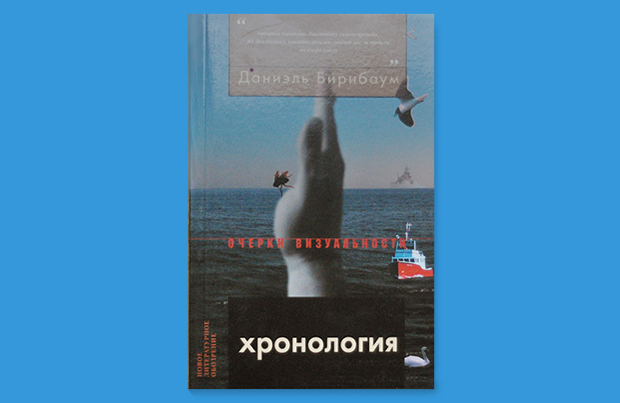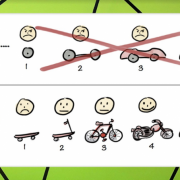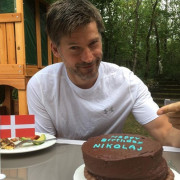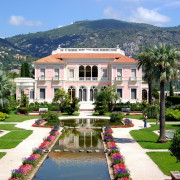Video art
Содержание:
- Early history
- Key Artists
- Общеобразовательные каналы
- Performance art and video art
- Further reading
- In the 1970s
- Алексей Исаев. «Антология российского видеоарта»
- Important Art and Artists of Video Art
- 1980s-1990s
- Даниэль Бирнбаум. «Хронология»
- Michael Rush. «Video Art»
- Пьерик Сорен. «Видеопрыжок: эксцентрические кинокартины»
- Useful Resources on Video Art
- Jackie Hatfield. «Experimental Film and Video: An Anthology»
- Каналы об искусстве на английском языке
Early history
Nam June Paik, a Korean-American artist who studied in Germany, is widely regarded as a pioneer in video art. In March 1963 Nam June Paik showed at the Galerie Parnass in Wuppertal the Exposition of Music – Electronic Television. In May 1963 Wolf Vostell showed the installation 6 TV Dé-coll/age at the Smolin Gallery in New York and created the video Sun in your head in Cologne. Originally Sun in your head was made on 16mm film and transferred 1967 to videotape.
Video art is often said to have begun when Paik used his new Sony Portapak to shoot footage of Pope Paul VI’s procession through New York City in the autumn of 1965 Later that same day, across town in a Greenwich Village cafe, Paik played the tapes and video art was born.
A Sony AV-3400 Portapak
Prior to the introduction of consumer video equipment, moving image production was only available non-commercially via 8mm film and 16mm film. After the Portapak’s introduction and its subsequent update every few years, many artists began exploring the new technology.
Many of the early prominent video artists were those involved with concurrent movements in conceptual art, performance, and experimental film. These include Americans Vito Acconci, Valie Export, John Baldessari, Peter Campus, Doris Totten Chase, Maureen Connor, Norman Cowie, Dimitri Devyatkin, Frank Gillette, Dan Graham, Gary Hill, Joan Jonas, Bruce Nauman, Nam June Paik, Bill Viola, Shigeko Kubota, Martha Rosler, William Wegman, and many others. There were also those such as Steina and Woody Vasulka who were interested in the formal qualities of video and employed video synthesizers to create abstract works. Kate Craig,Vera Frenkel and Michael Snow were important to the development of video art in Canada.
Key Artists
-
Nam June Paik
Nam June Paik worked with a variety of media and is considered to be the first video artist. Paik is credited with coining the term «information superhighway» and was known for making robots out of television sets.
-
Matthew Barney
Matthew Barney creates films based on performance and body art, most notably in his Drawing Restraint series and the five-film Cremaster Cycle.
-
VALIE EXPORT
Austrian performance artist VALIE EXPORT is known for her guerilla performance pieces, as well as her video and sculptural work, much of which focuses on the female body and feminist ideals.
-
Bruce Nauman
Bruce Nauman is a contemporary American artist concerned with language, process, manipulation, and the registers of irony. His work includes performance, video, installation, neon sculpture, and other materials.
-
John Baldessari
John Baldessari, born in 1931, is an American conceptual artist. He often combines image and languages in his art. His early works were canvas paintings that were empty except for painted statements derived from contemporary art theory. His juxtaposition of image and text is reminiscent of Rene Magritte’s surrealist paintings.
-
Joan Jonas
Joan Jonas is a pioneer of video and performance art often dealing with identity and feminist topics.
-
Martha Rosler
Rosler’s work with performance, video, and photography has garnered wide attention in the postmodern era for its feminist connotations, addressing body image issues and domesticity. Rosler’s work has also explored the imagery of war, from Vietnam to Iraq.
-
Andy Warhol
Andy Warhol was an American Pop artist best known for his prints and paintings of consumer goods, celebrities, and photographed disasters. One of the most famous and influential artists of the 1960s, he pioneered compositions and techniques that emphasized repetition and the mechanization of art.
-
Jack Goldstein
Jack Goldstein was a Canadian born, California-based performance and conceptual artist turned painter in the 1980s art boom. During the 1970s, he became one of the linchpins of the Pictures Generation.
View all
Общеобразовательные каналы
- Arzamas — просветительский проект, который рассказывает о различных направлениях в искусстве: музыке, изобразительном искусстве, философии, истории. Кроме того, тут можно посмотреть видеокурсы и онлайн-лекции, содержащие подробный и познавательный материал. Все видео разделены на тематические плейлисты, что облегчает поиск нужной информации.
- Арт-Бланш — канал, рассказывающий об искусстве с позиции обывателя. Здесь ведущие говорят, к примеру, о том, чем плагиат отличается от заимствования и цитирования, что плохого и хорошего в антиутопиях, в чём состоит суть искусства. Также они анализируют литературные произведения, рассказывают о жизни художников и писателей, демонстрируют зрителю стили и направления в архитектуре, музыке, изобразительном искусстве, кинематографе.
- Artifex — творческий альманах. Здесь можно услышать исповедь литературоведа, выбрать для просмотра художественный фильм об искусстве, а также отправиться в небольшое виртуальное путешествие по странам и континентам, чтобы увидеть там различные памятники культуры.
- KhanAcademyRussian — канал некоммерческой организации, цель которой — расширение нашей эрудированности. В плейлистах можно найти видео по истории искусства, мировой истории, направлениям и жанрам в искусстве, материалы по точным наукам.
- Школа популярного искусства OP_POP_ART — просветительский проект блогера Анастасии Постригай. Материалы канала рассказывают как об истории искусства, так и о его направлениях, которые существуют в настоящее время. Также здесь можно посмотреть вебинары по искусствоведению.
- Art Within — канал рассказывает об искусстве России и Украины. Тут можно найти видеоматериалы об архитектуре, кинематографе, живописи, истории произведений искусства.
Performance art and video art
Video art as a medium can also be combined with other forms of artistic expression such as Performance art. This combination can also be referred to as «media and performance art» when artists «break the mold of video and film and broaden the boundaries of art». With increased ability for artists to obtain video cameras, performance art started being documented and shared across large amounts of audiences. Artists such as Marina Abramovic and Ulay experimented with video taping their performances in the 1970s and the 1980s. In a piece titled “Rest energy” (1980) both Ulay and Marina suspended their weight so that they pulled back a bow and arrow aimed at her heart, Ulay held the arrow, and Marina the bow. The piece was 4:10 which Marina described as being “a performance about complete and total trust”.
Some artists experimented with space when combining Video art and Performance art. Ragnar Kjartannson, an Icelandic artist, filmed an entire music video with 9 different artists, including himself, being filmed in different rooms. All the artists could hear each other through a pair of headphones so that they could play the song together, the piece was titled «The visitors» (2012).
Further reading
- Making Video ‘In’ — The Contested Ground of Alternative Video On The West Coast Edited by Jennifer Abbott (Satellite Video Exchange Society, 2000).
- Videography: Video Media as Art and Culture by Sean Cubitt (MacMillan, 1993).
- A History of Experimental Film and Video by A. L. Rees (British Film Institute, 1999).
- New Media in Late 20th-Century Art by Michael Rush (Thames & Hudson, 1999).
- Mirror Machine: Video and Identity, edited by Janine Marchessault (Toronto: YYZ Books, 1995).
- Sounding the Gallery: Video and the Rise of Art Music by Holly Rogers (New York: Oxford University Press, 2013).
- Video Culture: A Critical Investigation, edited by John G. Hanhardt (Visual Studies Workshop Press, 1986).
- Video Art: A Guided Tour by Catherine Elwes (I.B. Tauris, 2004).
- A History of Video Art by Chris Meigh-Andrews (Berg, 2006)
- Diverse Practices: A Critical Reader on British Video Art edited by Julia Knight (University of Luton/Arts Council England, 1996)
- ARTFORUM FEB 1993 «Travels In The New Flesh» by Howard Hampton (Printed by ARTFORUM INTERNATIONAL 1993)
- Resolutions: Contemporary Video Practices’, (eds. Renov, Michael & Erika Suderburg) (London, Minneapolis: University of Minnesota Press,1996).
- Expanded Cinema by Gene Youngblood (New York: E.P. Dutton & Company, 1970).
- The Problematic of Video Art in the Museum 1968-1990 by Cyrus Manasseh (Cambria Press, 2009).
- «First Electronic Art Show» by (Niranjan Rajah & Hasnul J Saidon) (National Art Gallery, Kuala Lumpur, 1997)
- «Expanded Cinema», (David Curtis, A. L. Rees, Duncan White, and Steven Ball, eds), Tate Publishing, 2011
- «Retrospektiv-Film-org videokunst| Norge 1960-90». Edited by Farhad Kalantary & Linn Lervik. Atopia Stiftelse, Oslo, (April 2011).
- Experimental Film and Video, Jackie Hatfield, Editor. (John Libbey Publishing, 2006; distributed in North America by Indiana University Press)
- «REWIND: British Artists’ Video in the 1970s & 1980s», (Sean Cubitt, and Stephen Partridge, eds), John Libbey Publishing, 2012.
- Reaching Audiences: Distribution and Promotion of Alternative Moving Image by Julia Knight and Peter Thomas (Intellect, 2011)
- Wulf Herzogenrath: Videokunst der 60er Jahre in Deutschland, Kunsthalle Bremen, 2006, (No ISBN).
- Rudolf Frieling & Wulf Herzogenrath: 40jahrevideokunst.de: Digitales Erbe: Videokunst in Deutschland von 1963 bis heute, Hatje Cantz Verlag, 2006, ISBN 978-3-7757-1717-5.
- NBK Band 4. Time Pieces. Videokunst seit 1963. Verlag der Buchhandlung Walther König, Köln, 2013, ISBN 978-3-86335-074-1.
- Demolden Video Project: 2009-2014. Video Art Gallery, Santander, Spain, 2016, ISBN 978-84-16705-40-5.
- Valentino Catricalà, Laura Leuzzi, Cronologia della videoarte italiana, in Marco Maria Gazzano, KINEMA. Il cinema sulle tracce del cinema. Dal film alle arti elettroniche andata e ritorno, Exorma, Roma 2013.
In the 1970s
Much video art in the medium’s heyday experimented formally with the limitations of the video format. For example, American artist Peter Campus’ Double Vision combined the video signals from two Sony Portapaks through an electronic mixer, resulting in a distorted and radically dissonant image. Another representative piece, Joan Jonas’ Vertical Roll, involved recording previously-recorded material of Jonas dancing while playing the videos back on a television, resulting in a layered and complex representation of mediation.
A still from Jonas’ 1972 video
Much video art in the United States was produced out of New York City, with The Kitchen, founded in 1972 by Steina and Woody Vasulka (and assisted by video director Dimitri Devyatkin and Shridhar Bapat), serving as a nexus for many young artists. An early multi-channel video art work (using several monitors or screens) was by Ira Schneider and Frank Gillette. Wipe Cycle was first exhibited at the Howard Wise Gallery in New York in 1969 as part of an exhibition titled «TV as a Creative Medium». An installation of nine television screens, Wipe Cycle combined live images of gallery visitors, found footage from commercial television, and shots from pre-recorded tapes. The material was alternated from one monitor to the next in an elaborate choreography.
Wolf Vostell, Grasshoppers (Heuschrecken), 1970 (Installation with video monitors and video camera)
On the West coast, the San Jose State television studios in 1970, Willoughby Sharp began the «Videoviews» series of videotaped dialogues with artists. The «Videoviews» series consists of Sharps’ dialogues with Bruce Nauman (1970), Joseph Beuys (1972), Vito Acconci (1973), Chris Burden (1973), Lowell Darling (1974), and Dennis Oppenheim (1974). Also in 1970, Sharp curated «Body Works», an exhibition of video works by Vito Acconci, Terry Fox, Richard Serra, Keith Sonnier, Dennis Oppenheim and William Wegman which was presented at Tom Marioni’s Museum of Conceptual Art, San Francisco, California.
In Europe, Valie Export’s groundbreaking video piece, «Facing a Family» (1971) was one of the first instances of television intervention and broadcasting video art. The video, originally broadcast on the Austrian television program «Kontakte» February 2, 1971, shows a bourgeois Austrian family watching TV while eating dinner, creating a mirroring effect for many members of the audience who were doing the same thing. Export believed the television could complicate the relationship between subject, spectator, and television. In the United Kingdom David Hall’s «TV Interruptions» (1971) were transmitted intentionally unannounced and uncredited on Scottish TV, the first artist interventions on British television.
Алексей Исаев. «Антология российского видеоарта»

«Одним из первых в России, кто начал использовать компьютер для видеомонтажа был Сергей Шутов. В его ранней работе «Чувственные опыты», представлявшейся в форме видеоинсталяции, основу видеоизображения составляет порнографический фильм, деформированный с помощью компьютера до состояния полуразмытости очертаний действующих в кадре фигур. Это искаженное изображение помещено в своеобразные цветочные кулисы-рамку, обрамляющие телеэкран. При этом звуковым сопровождением видео служит женский голос за кадром, читающий любовные письма. Эта работа является весьма ярким примером постмодернистского метода совмещения на уровне одного плана выражения нескольких разнородных реальностей: частных интимных чувств, выражаемых в письмах — неизменный атрибут литературны любовных романов, коммерческого порно — новый жанр эксплуатации сексуальной темы и авторской иронии по отношению к обоим, выразившейся в сплавлении их в сентиментально-китчевом антураже».
Important Art and Artists of Video Art
Artist:
For Sun In Your Head — Television Décollage, German artist Wolf Vostell distorted and played with various single frames that he’d sourced from film and television of the time (such as a smiling woman; words such as «Silence Please! Genius At Work!» or an embracing couple, for example). The resulting piece is a fast-paced, flickering mish-mash of televisual images that veer from flashing, abstracted shapes to recognizable forms. The work was shown as part of Vostell’s nine-part ‘happening’ — 9 Decollagen — which took place in Wuppertal, Germany in 1963. As no video playback technology was available at the time, Vostell recorded the images from a television set using a film camera, allowing him to edit the piece and play it back on a projector. With its highly experimental technique and subversive form, Sun In Your Head was one of the first works to examine the possibilities of television as a medium in its own right. It employs his innovative use of the decollage technique, first associated with the French Nouveau Realisme movement who used the term to describe their ripping, erasing, and reworking of Parisian posters to create new information. Vostell used it to refer to the re-mixing and layering of image and sound he employed to create a new artistic language in his Video art. A pioneer of the European branches of the Fluxus and Happening movements, Vostell is considered one of the most influential early Video artists — he was also the first to use a television as an object in an artwork in 1958.
Artist: Andy Warhol
In Sleep, Andy Warhol filmed his close friend and occasional lover John Giorno sleeping for five hours and twenty minutes. The piece’s length means few people have watched it from beginning to end (two of the nine people who attended its premiere at The Gramercy Theater in New York left during its opening hour), and it is considered one of the first and most important works of durational art. Sleep looks at themes of intimacy, repetition, and duration, and is one of the first examples of what Warhol called his ‘anti-films’, in which he used hugely long, single takes to record his everyday experience and that of his friends. Although Sleep is a film rather than a video, Warhol’s use of the camera, in which he just switched it on and walked away, make it stylistically much closer to art then film since he is clearly looking to bash Hollywood’s conventions of narrative and the strategic manipulation of real time through editing. The artist’s use of such epic duration has been exceptionally influential, inspiring many contemporary film and video artists working today. Sam Taylor-Wood’s hour-long film of David Beckham sleeping in 2004 directly referenced Warhol’s piece. Christian Marclay’s 24 hour-long epic Clock and Douglas Gordon’s slowed version of Alfred Hitchcock’s masterpiece, 24 Hour Psycho, were also made in the same tradition.
Artist: Nam June Paik
Fluxus artist Nam June Pak was one of the first artists to break the barriers between art and technology. TV Cello is a seminal example, specifically created for use in performance by the avant-garde cellist Charlotte Moorman. The work consisted of three television sets piled on top of each other, all showing different moving images — a film of Moorman performing live, a collaged video of other cellists and an intercepted broadcast feed. Ingeniously, the whole sculpture was also a fully operational cello, designed to be played with a bow to create a series of raw, electronic notes that reverberated through the space. By appropriating the domestic television set as an art object in this way, Paik became one of the first artists to establish video as a serious artistic medium. By taking the television out of its normal setting and using it in such subversive performances, he wanted to question its increasingly dominant role in shaping public opinion.
More Important Art
View all Important Art
1980s-1990s
As the prices of editing software decreased, the access the general public had to utilize these technologies increased. Video editing software became so readily available that it changed the way digital media artists and video artists interacted with the mediums. Different themes emerged and were explored in the artists work, such as interactivity and nonlinearity. Criticisms of the editing software focused on the freedom that was created for the artists through the technology, but not for the audience. Some artists combined physical and digital techniques to allow their audience to physically explore the digital work. An example of this is Jeffrey Shaw’s «Legible City» (1988–91). In this piece the «audience» rides a stationary bicycle through a virtual images of Manhattan, Amsterdam, and Karlsrule. The images change depending on the direction of the bike handles, and the speed of the pedaler. This created a unique virtual experience for every participant.
Даниэль Бирнбаум. «Хронология»

«Чтобы по достоинству оценить искусство прошлых веков, – скажем, барочные аллегории или ренессансные религиозные мотивы – требуется неимоверное количество знаний; отчего же современное искусство должно быть иным? Наиболее сложные инсталляции Дугласа можно, конечно, понять и на «лобовом» уровне, но для зрителя, который захочет проникнуть глубже, эти работы приобретают куда большее значение. Дуглас отнюдь не затемняет смысл намеренно: его тексты, равно как и визуальные работы, кристально ясны. Просто подчас они настолько многослойны, что идеальный зритель – тот, кто способен охватить все задействованные параметры – едва ли вообще существует».
Michael Rush. «Video Art»
«The story of Video art embraces all the significant art ideas and forms of recent times — Abstract, Conceptual, Minimal, Performance and Pop art, photography and digital art. The story also departs from art-historical categories into a new domain, that of the technological, which has its own referents and language. As an ‘art of time’, video has been used to extend, repeat, fast forward, slow down, speed up and stop time. In the hands of such artists as Vito Acconci, Bill Viola, Gary Hill and Marina Abramovic, it has explored the body of the artists, the poetry of the soul, the complexity of the mind and the inequalities fostered by gender and political prejudice».
Книга музейного практика Майкла Раша представляет собой введение в историю видеоарта — от самых ранних опытов Брюса Наумана и Вито Аккончи до концептуальных, политических и персональных инсталляций 1980–90-х годов, среди которых работы Гэри Хилла, Билла Виола, Мэри Лусьер, Михаль Ровнер. Заканчивает автор современной цифровой революцией
Особое внимание уделено новаторским работам международного уровня и относительно новым формам высказывания, например в области виртуальной реальности, альтернативной скульптуры (сочетание неподвижного материала и движущегося изображения) и т.д.
Пьерик Сорен. «Видеопрыжок: эксцентрические кинокартины»

«В его фильмах ясно видны два различных подхода. В первом случае Сорен снимает непосредственно самого себя в том месте, которое он выбрал для действия (своем саду, кухне, так называемом музее…). Во втором случае он проецирует свое изображение, используя малюсенькую голограмму самого себя, помещенную в непропорционально маленькие декорации, построенные из оказавшихся под руками предметов и похожие на реквизит кукольного театрика. Миниатюрный Сорен предстает в виде резвого иллюзорного балагура, заброшенного в мир гигантов и испытывающего всевозможные притеснения. Общий настрой в этих фильмах, естественно, остается тем же, а упрощенные до крайности выразительные средства высмеивают напыщенность современных видеошоу и сопутствующий им эксгибиционизм авторов».
Первая русскоязычная монография о творчестве выдающегося французского художника и медиа-артиста Пьерика Сорена, подготовленная специально к его ретроспективе, проходившей в московском Центральном доме художника весной 2007 года. Сорен известен активным использованием хромакея, созданием «оптического театра» (по принципу Эмиля Рейно) с голографическими проекциями и другими необычными технологиями. При этом он часто сам снимается в своих работах, исполняя все роли. В книге содержится подборка искусствоведческих статей, переводных публикаций из французских таблоидов, высказываний художника, а также его сценарии и титры из фильмов.
Useful Resources on Video Art
Books
websites
articles
video clips
Books
The books and articles below constitute a bibliography of the sources used in the writing of this page. These also suggest some accessible resources for further research, especially ones that can be found and purchased via the internet.
-
Video Art: A Guided Tour (2005)Our Pick
By Catherine Elwes /
An index of Video Art artists and the history of that artmaking practice -
A History of Video Art: The Development of Form and Function (2006)
By Chris Meigh-Andrews /
Comprehensive history on Video Art practices
artists
-
Nam June Paik: Global Visionary (2013)Our Pick
Image-based collection of prominent Paik works
-
Bill Viola (2015)Our Pick
Compilation of notable Bill Viola works accompanied by explanations of the works
-
Paik’s Virtual Archive: Time, Change, and Materiality in Media Art (2017)
By Hanna B. Holling /
An analytical view of Paik’s influence on Video Art and its functionality -
Please Pay Attention Please: Bruce Nauman’s Words: Writings and Interviews (2005)
Collection of interviews and essays by the artist — detailing his transformative art making practices
View more books
websites
articles
video clips
Jackie Hatfield. «Experimental Film and Video: An Anthology»

«White Light» continues the fascination with chrome, its principle subject for twenty-two minutes being a set of chrome-plated bath taps. The film is quite freely structured, but highly controlled, insofar as much of it is made frame by frame. It is a kind of animation, which is partly why there are animated interludes interspersed throughout the film. These are all directly derives (rotoscoped) from the filmed footage, and are intended to be seen as lying somewhere between live action (mechanical images) and drawn animation (hand-made images), in order to pose the question of what kind of drawings are those made by tracing from mechanically generated sources».
Еще одна антология в нашей подборке, которая объединяет 25 статей, посвященных теоретическим и практическим вопросам творчества признанных мастеров видеоарта, работающих в области кино, видео и цифровых медиа с 1960-х годов до настоящего времени. Помимо этих материалов, в антологию вошли интервью и очерки различных фильммейкеров, видеохудожников и пионеров интерактивного кино. Главная цель издания — показать, каким образом технологические инновации за прошедшие 40 лет повлияли на процессы видеопроизводства и расширили поле для художественных экспериментов.
Каналы об искусстве на английском языке
- The Museum of Modern Art. Цель искусствоведов музея — знакомство зрителей с как можно большим количеством художников и произведениями искусства нашего времени.
- Smarthistory. art, history, conversation. Цель канала — открыть зрителям двери музеев, а также показать различные культурные объекты. Видеоэссе охватывают произведения искусства от палеолита до современности.
- The Art Assignment — художественное еженедельное производство Pbs Digital Studios. Авторы канала исследуют искусство и его историю через призму событий современности.
- Tate — канал не только записывает интервью с художниками, лекции и мероприятия, но и выкладывает целые тематические циклы. Например, в плейлисте Unlock Art об искусстве можно узнать из уст известных людей — актеров, музыкантов и писателей, а раздел Lost Art рассказывает об утраченных по разным причинам произведениях.
- The Met — канал рассказывает об экспонатах из своего собрания. Здесь традиционно можно найти лекции для взрослых, но особенно примечателен раздел для детей, где об искусстве рассказывают на конкретных примерах.








